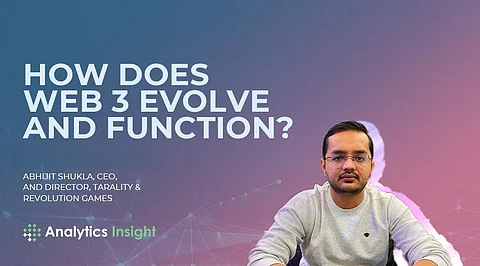

Web 3.0, sometimes known as Web 3, is the emerging phase of the Internet. It is based on the idea of creating a totally decentralized ecosystem. This new technological dimension believes in leveraging the power of Artificial Intelligence, Machine Learning, and the latest technologies like Blockchain to solve the problems of the present-day internet/online ecosystem.
Web 3.0 does not require "permission". It means that central authorities don't dictate who uses what services, nor is there a need for "trust," referring to the idea that a mediator does not need to facilitate digital transactions between two or more parties.
Also, it protects user privacy better as well, because it's these authorities and intermediaries that are doing most of the data collection. Web 3.0 is an umbrella term that encompasses several ideas and ultramodern visions of decentralization where community-powered, advertising-free, and self-monetized content will reign supreme. Although it will disrupt many existing Web 2.0-based business models, the creator economy is positioned as the biggest benefactor of this ongoing revolution vis-à-vis a reinvented social media paradigm.
With the potential to revolutionise how we use the internet, Web 3.0 will enable services to be used anywhere, thanks to the fact that all data and information are given access to multiple smart apps. With this latest technology, professionals and recent graduates from every sector will witness an internet system that is more dynamic and interactive than the one we currently use.
And since the data is stored across several systems, there is also minimal risk of information leaks, making Web 3.0 more resilient. For example, in the healthcare industry, Web 3.0 will make automating all the incoming data a quicker, more efficient, and seamless process. Medical practitioners will then be able to rely on Web 3.0-based applications that will fasten the process of new admissions and cut down latencies in the doctor-patient relationships. For technology-related professionals, Web 3.0 will be a game-changer.
The basic idea behind the concept of Web 3 is to make the internet a smarter place. This new era of the web will make the global internet more responsive, intelligent, and capable of giving a more satisfying and tailored experience to the user. It will efficiently transform the way we know or use the internet today.
Web 3.0 promises verifiable, self-governing, trustless, permission-less and robust transfer of data and information across the platforms. For the transition of Web from Web2 to Web3, a greater number of people should start developing and using decentralized applications.
The main challenge using these decentralized applications is that there is a large chunk of the non-technical user base existing in society. In order to make web3 a success we have to create simple decentralized applications, which are easy to use for each and every user out there. With the advancement of technology, it won't be a surprise if in the next several years, the internet shifts from Web 2.0 to Web 3.0.
Web 3.0 is a game-changer for businesses and entrepreneurs, and is enabling businesses to better understand their customers, and manage their data. Also, improving their products and services. For entrepreneurs, Web 3.0 benefit is making it easier to raise funds, acquire customers, and research their markets. With the right approach, businesses and entrepreneurs are capitalizing on this new technology and staying ahead of the competition. Web 3.0 is an opportunity for businesses, start-ups, and entrepreneurs for taking their businesses to the next level. All they require is the correct approach.
Join our WhatsApp Channel to get the latest news, exclusives and videos on WhatsApp
_____________
Disclaimer: Analytics Insight does not provide financial advice or guidance. Also note that the cryptocurrencies mentioned/listed on the website could potentially be scams, i.e. designed to induce you to invest financial resources that may be lost forever and not be recoverable once investments are made. You are responsible for conducting your own research (DYOR) before making any investments. Read more here.
